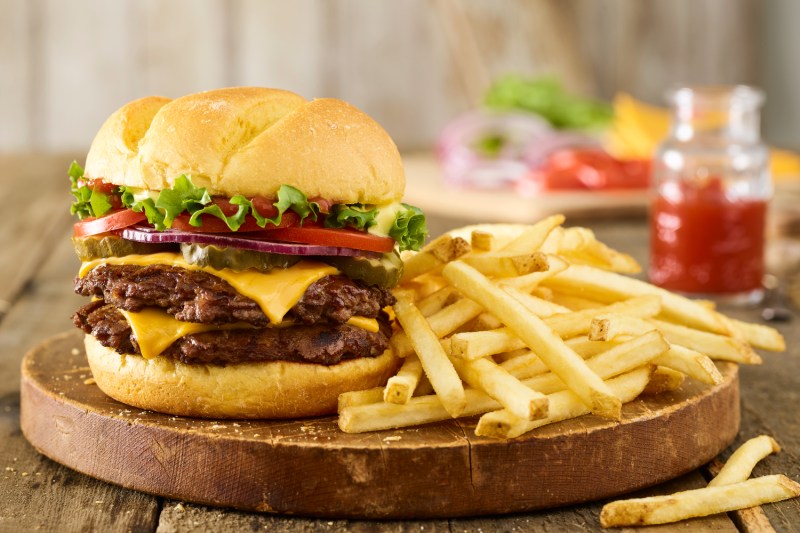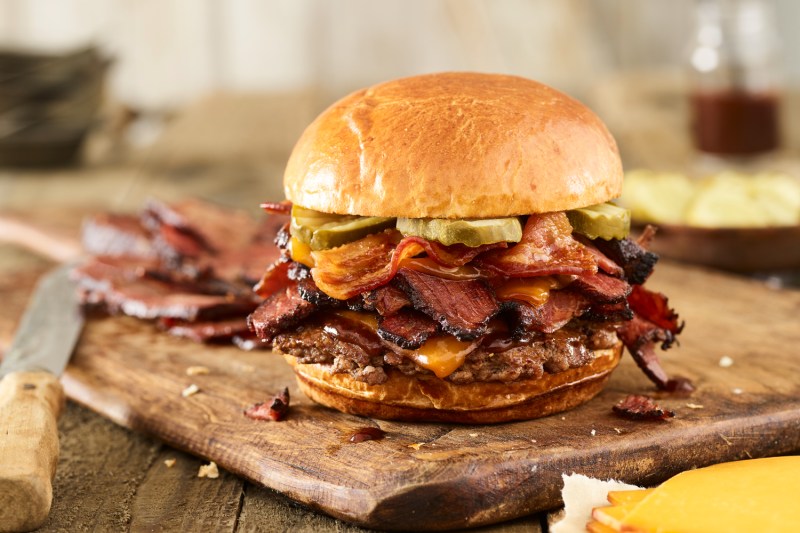Whether you're organizing your home bar setup or learning how to make a great classic cocktail, the best way to learn how to do something is to talk up an expert. So when wondering about the art of the Smashburger, we called upon Ty Goerke. He's the head chef and culinary innovation director at the fast-casual chain that made the burger popular.
As you may have guessed, it's all about the smashing with this particular burger. Goerke calls it a culinary technique and rightly so. He uses a customized metal smasher, designed to be the size of the patty. The meat is pressed for 10 seconds atop the seasoned grill. "This caramelizes the patty and creates a flavorful crust, forcing the juices and flavor in the meat upwards, delivering an elevated burger experience," he said.
Here's how to do it, even if you don't have a custom smasher.

How to make a Smashburger
Before you attempt one, know that the process is a pretty quick one, so it pays to be ready. "Start your grilled toppings first, as they will take longer to cook than the burgers," Goerke advised.
He said you should aim for about one-third of an inch in height for your patty, once it's smashed. After a 1 1/2 minutes, it should be ready for a flip. Add the cheese as the finishing touch and pull it off right when it melts.
Here's a breakdown of the process.
Step 1: Paint the grill with melted butter.
Step 2: Roll your patty into a ball and place it on top of the melted butter. Put a sheet of deli paper on top of the meat.
Step 3: Smash the beef for 10 seconds, metal to metal. "Metal to metal is the phrase we use at Smashburger to emphasize the importance of the smasher being pressed onto the surface of the grill," the chef said. Discard deli paper.
Step 4: Add burger seasoning at this time, and it will integrate and melt into the burger.
Step 5: Flip once, add cheese, allow it to melt, and then done. "The more we move a product, the more we are removing moisture and flavor," the chef added.

A few final tips
As Goerke said, when it comes to the meat, grade is important, but so is grind. He said they use a roughly 75% to 25% ratio of lean to fat in their patties. "This ratio allows burgers to 'percolate' after they are smashed, melting the seasonings into the burger evenly," Goerke said.
You can also get crafty with your seasonings, going classic with a mix of brown sugar, paprika, onion powder, and garlic powder, or change it up entirely. Try cumin or chili flakes or even ginger. Also, experiment with additions like fish sauce, soy sauce, or steak sauce, but just be aware that the added moisture might affect grilling times.
As always, play around with your cheese selections, too. Swiss and American are great, but brie, goat cheese, and fresh mozzarella are fine options as well, just to name a few.

What about other toppings?
Don't stop at beef. Consider brisket and other meat (and faux-meat) patties. As for other toppings, the sky is the limit. Smashburgers are excellent with caramelized onions, pickles, avocado, and blue cheese. Try less popular toppings like pineapple, spinach dip, or tzatziki for a little flair. And don't forget to make it a proper meal with a side of fries, tots, grilled veggies, or a good summer salad.
Now, a pro-quality Smashburger is well within your reach. If you really get a taste for the popular burger style, you can consider making your own custom smasher. In the meantime, enjoy grilling season, whether you're sipping a refreshing frozen cocktail or cleaning the grill you just cooked on.



